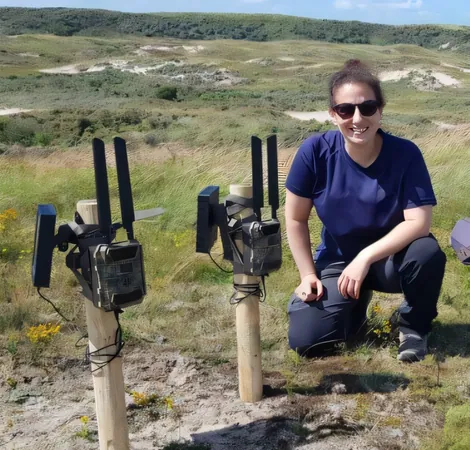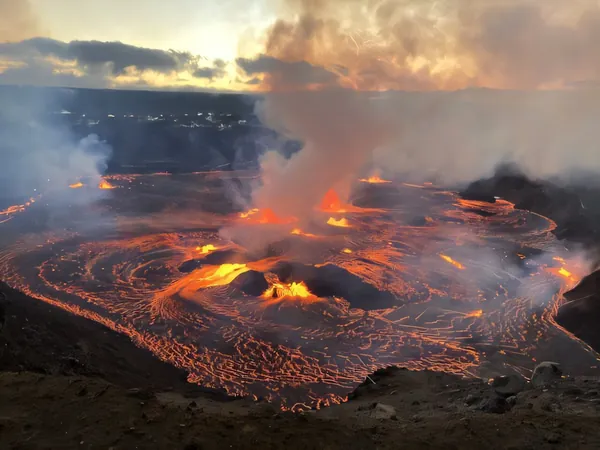
Revolutionizing Biodiversity Monitoring: How AI and Automated Cameras are Transforming Conservation Efforts!
2024-11-07
Author: Charlotte
Imagine being able to monitor the wonders of nature around the clock, without the need for constant human presence! This intriguing possibility is becoming a reality thanks to groundbreaking research emanating from the University of Amsterdam's Institute for Biodiversity and Ecosystem Dynamics (IBED). Partnering with Waternet, researchers have deployed an advanced wildlife monitoring system in the rich ecosystems of the Amsterdam Water Supply Dunes (AWD)—an area boasting stunning coastal landscapes between Amsterdam and the North Sea.
The AWD isn’t just a pretty sight; it serves multiple critical purposes, including purifying drinking water, providing recreational spaces for nature enthusiasts, and protecting a variety of wildlife, from fallow deer and foxes to rabbits. Historically, monitoring these species relied on labor-intensive field surveys conducted twice a year, a process that demanded significant time and manpower.
Enter the Future: Automated Wildlife Cameras!
This innovative project introduces a network of solar-powered wildlife cameras that work tirelessly 24/7 to capture images of the flora and fauna in the reserve. These cameras are equipped with cutting-edge wireless data transmission capabilities, enabling a seamless flow of information. From 2021 to 2023, researchers tested various camera traps that not only gather insightful images but also feature a web portal for remote monitoring. This portal provides real-time information about camera health, battery status, and even alerts for potential malfunctions.
What sets this system apart is its integration with AI technology. The cameras can send images to AI platforms, which efficiently identify animal species captured in the shots. Initial tests have shown promising results: the AI was adept at recognizing rabbits, foxes, and fallow deer, significantly speeding up the analysis process that once required hours of labor.
Long-Term Gains Over Short-Term Investment
Though the upfront costs of this automated monitoring system exceed those of conventional methods, the long-term advantages are compelling. Over a decade, the automated system is estimated to be 43% more cost-effective due to reduced need for labor and less frequent trips into the field to maintain equipment or collect data.
Unlocking Ecological Secrets
The study established a grid of 65 strategically placed cameras across various habitats within the AWD. This included positioning cameras inside and outside exclosures designed to study the recovery patterns of the ecosystem when fallow deer are prevented from overgrazing. Currently, researchers are focused on investigating the alarming decline of the rabbit population—a concerning trend observed recently in the coastal dunes.
Other species, such as the elusive red fox, European hare, and roe deer, have not been adequately monitored through traditional surveys. The new camera network offers a thrilling opportunity to collect valuable data on their behaviors and distributions, ultimately enhancing conservation efforts.
In addition to tracking target species, the camera network has already uncovered a treasure trove of biodiversity, detecting 18 different species, including various bird species and even rare polecats. This rich data stream is set to provide scientists with an unparalleled understanding of wildlife dynamics and help conservationists make more informed decisions.
Conclusion: The Future of Conservation is Here!
With its relentless surveillance capabilities, this innovative monitoring system is changing the game for wildlife research and conservation. Combining advanced technology with ecological insights, it promises to protect and preserve the delicate balance of our natural world—ensuring future generations can enjoy the diverse ecosystems that surround us. Could this breakthrough technology signal the dawn of a new era in biodiversity monitoring? Only time will tell!









 Brasil (PT)
Brasil (PT)
 Canada (EN)
Canada (EN)
 Chile (ES)
Chile (ES)
 España (ES)
España (ES)
 France (FR)
France (FR)
 Hong Kong (EN)
Hong Kong (EN)
 Italia (IT)
Italia (IT)
 日本 (JA)
日本 (JA)
 Magyarország (HU)
Magyarország (HU)
 Norge (NO)
Norge (NO)
 Polska (PL)
Polska (PL)
 Schweiz (DE)
Schweiz (DE)
 Singapore (EN)
Singapore (EN)
 Sverige (SV)
Sverige (SV)
 Suomi (FI)
Suomi (FI)
 Türkiye (TR)
Türkiye (TR)